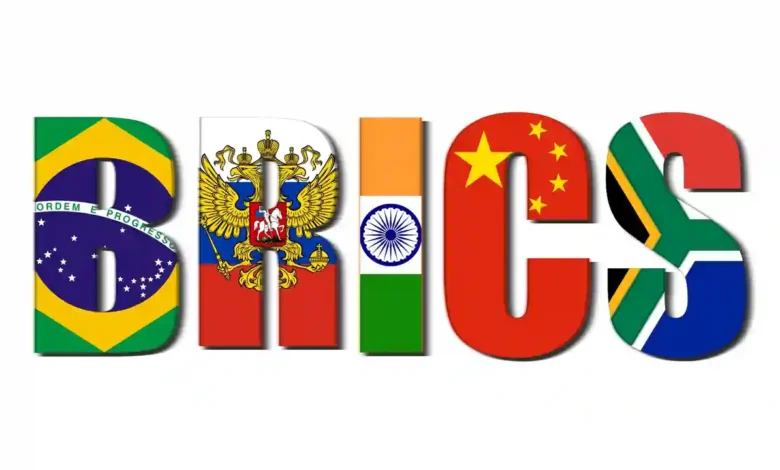BRICS and Pakistan

32 countries have confirmed their participation in the summit. Kazan is all set to host the 16th summit of BRICS, an emerging economic bloc founded by Brazil, Russia, India, China, and South Africa. The theme of the 16th summit is “Strengthening Multilateralism for Just Global Development and Security.”
The summiteers will also consider full membership or cooperation with 34 countries, including Pakistan. BRICS nations make up 28.3% of the world’s land area and 44.6% of its population. Their combined GDP was $29 trillion last year, representing 27.4% of the global economy. In comparison, the G7 — which includes the largest economies of the world: France, Germany, Italy, Japan, the USA, Britain, and Canada — has a collective GDP of $45.92 trillion, representing 43% of the global economy.
BRICS nations are the drivers of global economic growth and hold a dominant position in terms of reserves. Saudi Arabia and the UAE are in the queue for membership. BRICS accounts for 43% of global oil deposits and controls 40% of the reserves needed for manufacturing batteries for electric power storage systems and microelectronics, mainly dominated by China.
BRICS has established a new type of multilateral development bank, focusing on climate-related projects in developing countries, agricultural projects for poverty reduction and food security, communication channels, technology, education, and financial instruments for investments. The BRICS perspective revolves around three pillars: economic growth, political security, and people-to-people exchanges. BRICS aims to address issues of mutual interest — economic growth, national security, public health, inclusive multilateralism, and global governance — by promoting a more representative, democratic, and accountable international system.
Countries that defy or refuse to align with the US often find themselves in conflict due to the dollar’s dominance and the West’s geopolitical interests. The US approach, characterized as “East vs. West” and “West vs. the Rest,” leaves little room for sovereignty, creating a divide between the Global North and the Global South. More than 60% of international currency reserves are invested in dollars. Therefore, BRICS is now shifting away from the dollar to local currencies for trade between member states. The BRICS currency will not be a standalone currency but will be based on a basket of currencies — including gold, the real, ruble, rupee, yuan, and rand — with a backing ratio of approximately 60%.
Read Also: Sexual Harassment – No More
The proposed BRICS currency, reportedly based on a mix of currencies with a 60% gold backing, aims to create a more stable and diverse global currency landscape. This structure is designed to reduce dependence on any single currency, offering a tangible asset base that could increase the currency’s stability and trustworthiness. By including multiple currencies from BRICS nations, the plan promotes diversification and minimizes exposure to individual currency fluctuations.
A BRICS currency could reduce the dominance of the US dollar in global trade and finance. The gold backing and a basket of currencies may provide a more stable store of value and medium of exchange. It could facilitate trade and investment among member nations, boosting economic cooperation and growth. However, establishing such a currency with gold backing and a basket of currencies will require significant technical and logistical efforts. Determining its value relative to other currencies could be challenging, and its widespread adoption will depend on its perceived stability and trustworthiness.
BRICS nations will need to engage in extensive discussions to finalize the currency’s design, implementation, and governance structure. Pilot programs or trials may be conducted to test the currency’s feasibility and address operational issues. Additionally, BRICS nations will need to collaborate with other countries, international organizations, and financial institutions to promote the currency’s adoption and acceptance. This development could reshape the global currency landscape and foster greater economic cooperation among BRICS nations.
On the other hand, China is not only an economic partner for Pakistan but also critical for its defense needs and protection of core interests at the global level. Previously, Pakistan was heavily dependent on the USA, but as America shifts its focus towards India, Pakistan now relies more on China. It is essential for both China and Pakistan to fully understand their rights and explore trade opportunities to ensure a more equitable partnership. As a member of the United Nations Security Council, China has shielded Pakistan from many challenges. Without Beijing’s support, Pakistan might have faced difficulties with many states, including India.
Pakistan’s relationship with BRICS is multifaceted and has evolved over time. The China-Pakistan Economic Corridor (CPEC), a flagship project of China’s Belt and Road Initiative (BRI), has strengthened Pakistan’s economic ties with China, a key BRICS member. Pakistan has signed trade agreements with BRICS countries, such as the China-Pakistan Free Trade Agreement (CPFTA) and the Pakistan-Russia Trade Agreement. Pakistan offers attractive investment opportunities in sectors like energy, infrastructure, and textiles, which can be explored by BRICS countries.
Read Also: Women’s Safety and Empowerment in South Asia
Pakistan’s geographical location at the crossroads of Asia, the Middle East, and Europe makes it a vital player in regional politics and trade. Its role in Afghanistan’s peace process and efforts to combat terrorism have been acknowledged by BRICS countries. However, the complex relationship between India and Pakistan affects regional stability and BRICS engagement. China has consistently supported Pakistan’s membership in regional organizations, such as the Shanghai Cooperation Organization (SCO). Russia has shown interest in strengthening ties with Pakistan, particularly in the energy sector. India, however, has expressed concerns about Pakistan’s alleged support for terrorism and its impact on regional stability.
Pakistan has expressed interest in becoming a full member of BRICS, which would provide access to new markets, technologies, and investment opportunities. It aims to strengthen economic ties with BRICS countries, particularly in areas like energy, infrastructure, and trade, and to contribute to regional security and stability through its engagement with BRICS nations.
In conclusion, Pakistan’s relationship with BRICS is complex and multifaceted. While significant progress has been made in strengthening economic ties, particularly with China, aspirations for full membership and increased cooperation face challenges. Addressing regional security concerns, improving economic governance, and enhancing trade competitiveness will be crucial for Pakistan to deepen its engagement with BRICS.
 Quraitulain Qureshi
Quraitulain Qureshi
Quraitulain Qureshi is a seasoned journalist and a dedicated CSS mentor. She combines her deep understanding of current affairs with a passion for guiding aspiring civil servants. You can reach her at 1995faded@gmail.com